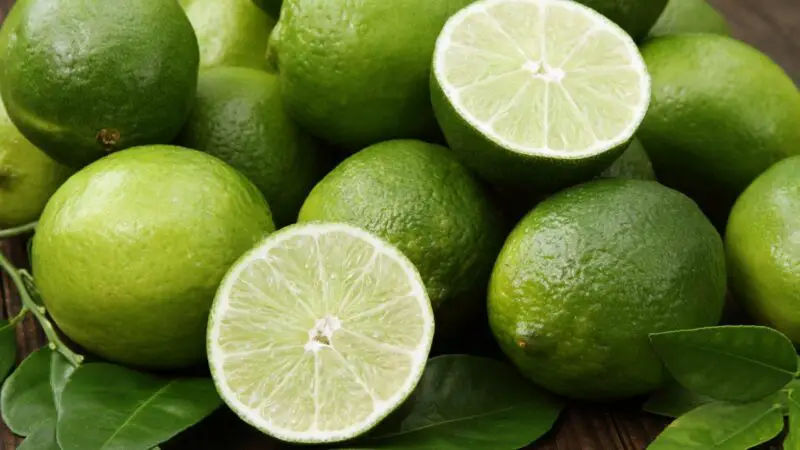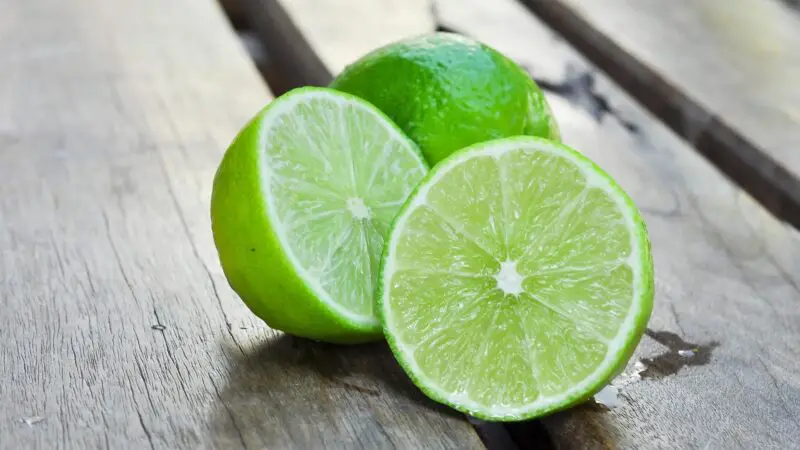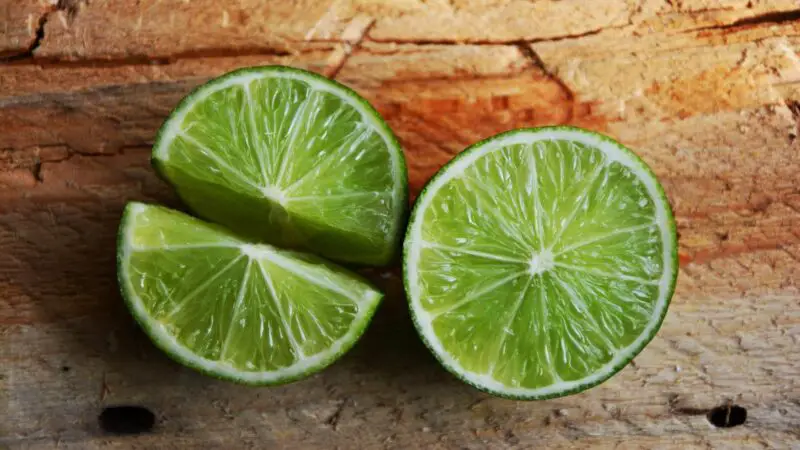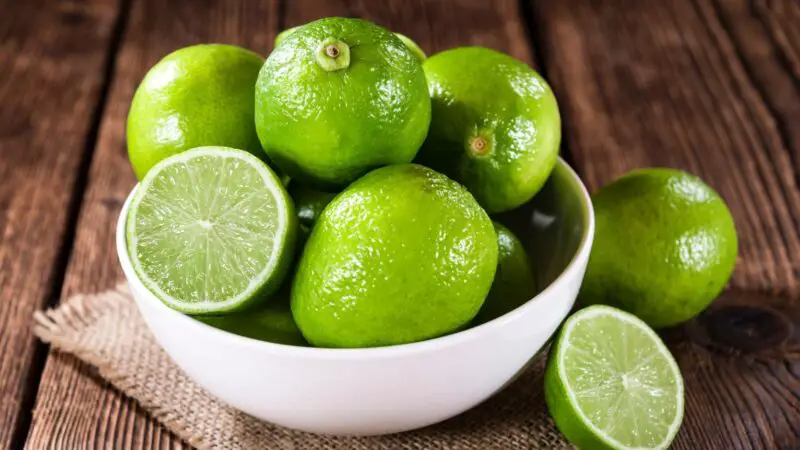Limes are vibrant-green fruit with a bright green flesh, acidic lemon taste, and specific aroma. It is like a green lemon with just a few minor differences. We use limes for cooking and cocktails because it’s healthy and tasty. But, is this fruit good for guinea pigs? Let’s see below.
Can guinea pigs eat limes? Guinea pigs can’t eat limes. This fruit is acidic, but it has some sugar. Because of these things, lime can’t be given to guinea pigs. The digestive tract of cavies is not meant for digesting lots of sugars. Also, the stomach of guinea pigs might become upset from the high acidity of this fruit.
Maybe our guinea pigs don’t drink Mojitos, but this doesn’t mean they shouldn’t try lime! Even if the cavy does not like the taste, there is no harm in giving it a try.
However, if you decide to feed your guinea pig lime just for the taste, you should see more details them in the sections below.
Table of Content
Are Limes Good for Guinea Pigs? | Health Benefits

- Energy – Lime has carbs and proteins, which are the main sources of energy. When the cavy gets the needed carbs, it will have the energy right away. From the proteins, the guinea pig will have energy that lasts long after the digestion is over.
- Good digestion – This fruit has fibers. Fibers are well known for their ability to improve digestion and work up the stomach. Just be careful with the serving size. Too much fiber might upset the stomach, but a normal amount in moderation is fine.
- Antioxidants – Vitamin A in lime has many functions. Primarily, it is an antioxidant. Its job is to protect the body from diseases and from free radical damage.
Without antioxidants, immunity suffers, and diseases continue to spread. But, vitamin A acts as a shield against health problems and it improves the immunity overall.
- Prevention from scurvy – The best thing about limes is that they have lots of vitamin C. Guinea pigs can’t produce this vitamin themselves, so fruits or veggies that have vitamin C are the best things you can feed your furry pet with.
Scurvy is a dangerous disease that manifests with rough coat, discharge, internal bleeding, no appetite, weight loss, and fatigue.
- Prevention of muscle aches and electrolyte balance – Limes have potassium. Primarily, it soothes aching muscles. This means all muscles (including heart muscle) will be relieved from aches.
With potassium, there is also a balance between the salts (electrolytes) and water in the body.
Nutrition Facts of Limes

Per one lime (2 oz), there is:
- Carbs and proteins – 7 g carbs and 0.5 g protein. The carbs give instant energy, and the proteins release energy slower after digestion. This energy lasts longer too.
- Fiber – 1.9 g. The fibers are needed for healthy digestion. The fibers don’t just improve digestion, but they also reduce any risk of heart diseases and diabetes too.
- Vitamin A – 1%. This vitamin helps with the formation of bone tissue and teeth. Also, this vitamin is an antioxidant and keeps the overall immunity in great shape. White blood cells are formed with this vitamin as well.
- Vitamin C -32%. Guinea pigs need this vitamin because without it, they get scurvy. Sadly, guinea pigs can’t produce vitamin C by themselves, but luckily, lime has this vitamin.
- Potassium – 68 mg. This nutrient keeps all muscle tissues pain-free. Also, it regulates the blood sugar and keeps the balance between water and electrolytes.
Are Limes Bad for Guinea Pigs? | Possible Risks

The main danger of lime is the calcium content. This mineral is crucial for forming strong bones, but it can also cause health problems in cavies. One lime (2 oz) has 22 mg calcium. This amount is quite high for the guinea pigs.
They can’t consume too much calcium once they are fully grown and developed. Calcium is needed while the pups are growing up, but older guinea pigs don’t need it that much.
When there is an excess of calcium, this mineral deposits in the urinary tract of the guinea pig. This can cause bladder or kidney stones, painful urination, or even blood in the urine.
Consult the veterinarian if you notice these symptoms in your guinea pig. If left untreated, this can worsen and can lead to renal failure, which is fatal.
Another risk is the sugar content. Limes are sweeter than lemons, and they have 1 g of sugar per fruit. This isn’t as terrifying because, even if it wanted to, the guinea pig can’t consume an entire lime at once.
However, if you give the guinea pig lime on occasion and in small quantities, it will be fine.
More Information About Guinea Pigs and Limes
How Much Lime Can the Guinea Pig Eat?
You can slice the lime, and after that give just one tiny piece to the guinea pig. This should be enough for the cavy to taste it because more than one small chunk will be too much.
Lime is very acidic, just like the lemon. This can disturb the stomach of the guinea pig. You can give this to the guinea pig, but just for them to taste it.
What Happens if the Guinea Pig Eats Too Much Lime?
No need to panic if the guinea pig had an extra bite of the lime chunk. But, the expected side effects are upset stomach and intestines.
Make sure there is other fresh food in the cage, as well as fresh water. This will suppress the side effects of too much lime and will soothe the stomach.
Quick Facts on Limes

- The lime originates from Southeast Asia.
- The most popular lime types are Persian, West Indian, Dessert lime, Sweet lime, Kaffir lime, and Key lime.
- Lime is cultivated all year round, and the best limes are picked from May to September.
- In the 19th century, the disease scurvy spread mostly among sailors. In that period of time, lemons used to be quite pricey, so the lime was the ‘lemon alternative.’ Every British sailor was advised to consume a whole lime every day to avoid the scurvy.
- The greatest lime manufacturer worldwide is India.
- Arab traders used to travel across Asia in the 10th century. So when they discovered lime, they brought the trees back to North Africa and Egypt.
- In Europe, limes were introduced in the 12th and 13th century, and this was done by the traveling Crusaders.
- Christopher Columbus brought lime seeds to the West, on his way back home, during his voyage in 1493. Soon after that, limes were commercially sold in Florida, Mexico, and the West Indies.
We have also made a full list of foods that guinea pigs can and can’t eat (150+ Types of Foods). Be sure to also check our recommended products page for everything you will ever need to assure a happy life for your guinea pigs. Hope this information was helpful and you have found the answer you were looking for.
List of Sources
Vitamin C Requirements of the Guinea-Pig
Nutrient Requirements of Laboratory Animals: Fourth Revised Edition
The Effects of Diet on Anatomy, Physiology and Health in the Guinea Pig
